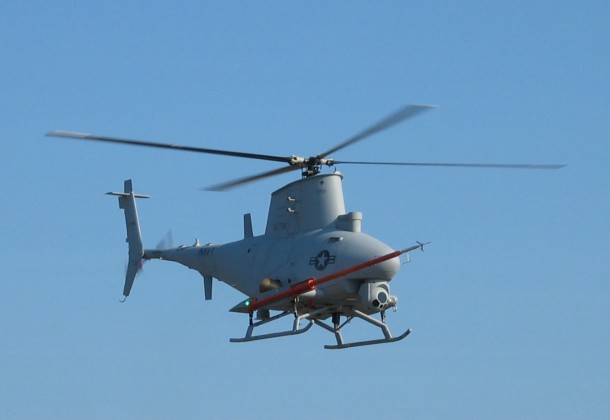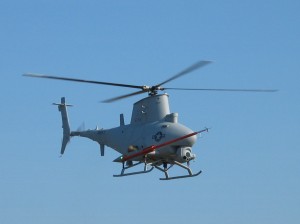Fire Scout Tests Biofuel

The Navy reached a milestone in its quest to gain energy independence today, when an MQ-8B Fire Scout successfully flew the first unmanned biofueled flight at Webster Field in St. Inigoes, Maryland.
The Unmanned Aircraft Systems Test Directorate piloted the helicopter fueled with a combination of JP-5 aviation fuel and plant-based camelina. According to the Navy, the biofuel blend reduces carbon dioxide output by 75 percent when compared to conventional aviation fuel.
“Today’s flight marks a significant milestone with Fire Scout being the Navy’s first unmanned aircraft to use biofuel technology,” said Rear Adm. Bill Shannon, Program Executive Officer for Unmanned Aviation and Strike Weapons, in a prepared statement. “I am very pleased we can add MQ-8B to the list of successful bioflights completed at Pax River this year, bringing us one step closer to achieving the Navy’s energy goals.”
The MQ-8B Fire Scout unmanned helicopter is intended to provide critical situational awareness, intelligence, surveillance, reconnaissance (ISR), and targeting data for ships. Fire Scout is designed to operate from all air capable ships and is currently providing ISR support during its first-land based deployment in U.S. Central Command (CENTCOM) area of responsibility.
Fire Scout is the seventh and final aircraft to demonstrate the versatility of biofuel through its use in all facets of naval aviation. The completion of aircraft biofuel testing at Pax River is part of the Navy’s determination in achieving its goal of launching the “Great Green Fleet.”
Source: NAWCAD Public Affairs
























